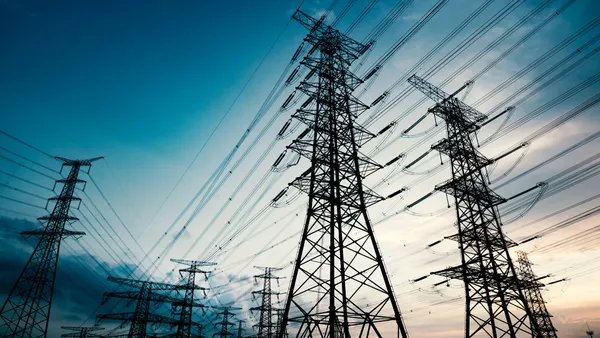Dive Brief:
-
Public power and cooperative utilities face a deteriorating financial outlook, driven by inflationary pressures, high natural gas prices and slower economic growth, Fitch Ratings said Tuesday.
-
Inflation will increase costs about 7% this year and nearly 4% in 2023, according to Fitch. Regional labor shortages and growing renewable energy mandates, along with spending needed to protect systems against cyberattacks and the effects of climate change, will also drive up electric costs, the ratings agency said.
-
“Sustained cost pressures and slower economic growth through 2023 will result in the most challenging operating environment the public power sector has faced in many years,” Kathy Masterson, Fitch senior director, said. “A prolonged period of high inflation and lower demand could undermine efforts to preserve financial margins.”
Dive Insight:
Among the challenges facing public power and cooperative utilities, risks from generating capacity constraints and energy shortfalls are emerging, raising the possibility of higher wholesale energy prices and rolling blackouts, Fitch said in its report.
“Extreme temperatures may drive record peak demand for electricity, while drought conditions, plant retirements and wildfire risks could challenge resource availability,” the ratings agency said.
Projected capacity needs to offset power plant closures and meet growing electricity demand are “aggressive” and may be hard to meet, given supply chain disruptions, Fitch said.
“The increased frequency and worsening severity of extreme weather events will continue to be a threat to the sector as utilities work to expand and improve resiliency of electric and gas supply and contend with unforeseen expenses that can arise in the aftermath of severe weather events,” Fitch said.
The ratings agency warned that cyberattacks pose major financial risks.
“A breach of critical utility assets from cyberattacks that halt service or require ransomware payments could negatively affect utility financial performance and could result in widespread public and private sector shutdowns,” Fitch said.
Fitch said it expects energy prices to remain elevated through next year, driving fuel and purchased power costs higher and reducing financial headroom for public power and cooperative utilities. Fitch expects natural gas prices next year to average $5/thousand cubic feet, down from $6.75/mcf in 2022, but higher than in recent years.
Fitch said it expects the trend of weakening affordability to continue in the near term, increasing rate pressures
and threatening utility operating margins. Residential electric costs will use 2.1% to 2.2% of median household income next year, about the same as this year, the ratings agency estimated.
Despite the challenges, public power and cooperative utilities will likely gradually increase their capital spending, according to Fitch.
New wind and solar generation will dominate near-term added capacity and tax credits in the Inflation Reduction Act should increase direct investment by not-for-profit utilities, Fitch said.
“This may reverse the trend where capex by wholesale systems fell below depreciation in six of the last eight years,” the ratings agency said. “Spending by retail systems should be more robust, led by initiatives to improve grid resiliency.”
Given the technological risk and unknown path to achieving emerging 100% carbon-free electricity goals, “the effect on reliability, customer bills and credit quality remains a long-term concern,” Fitch said.















